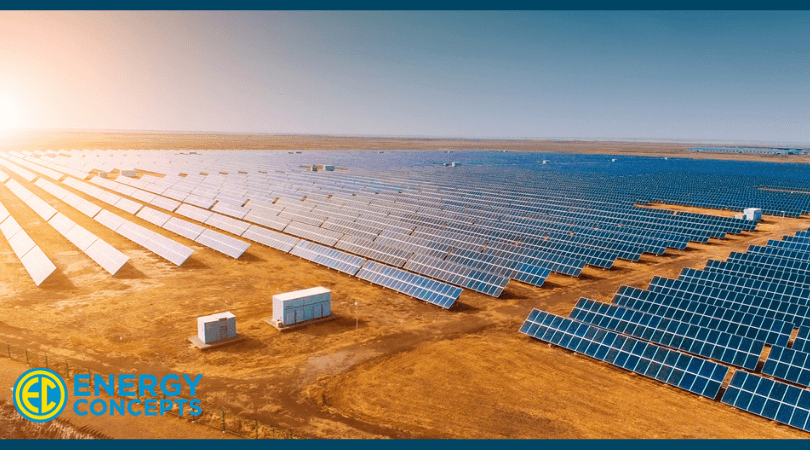How Much Energy Do Solar Farms Produce?

Most people are familiar with solar panels at the residential or commercial level. This is when you have panels installed on your roof or your property to generate power for your building and facility or for your home, but many don’t know what solar farms are, how they work or who benefits from them. Keep reading to learn more.
What is a Solar Farm?
A solar farm generates power for entire neighborhoods, business complexes, or even cities. Most of the time, they are located in large desert areas or what’s known as “disturbed” land, which is land that has already been built on by people.
Solar farms can take up as much as 100 acres of land, sometimes even more, like in the case of Solar Star. Solar Star has the largest solar farm in America, which spans over 3,200 acres in Kern and Los Angeles Counties. It contains 1.7 million solar panels and produces 579 megawatts of energy, which is enough to power more than 250,000 homes.
What are Solar Farms Used For?
Depending on the size, solar farms can be used for many different purposes. For instance, the energy generated from Solar Star’s farm is purchased by Southern California Edison who then distributes it to customers in their region.
How Do Solar Farms Work?
Obviously, the larger the solar array is, the more potential for power generation it has, but other factors contribute to their efficiency as well. One other factor is the type of panel that is used: motionless or tracker panels. Motionless panels remain stationary while tracker panels are equipped with technology which moves the panels to follow the sun’s movement across the sky. The tracker panels technology makes them about 25% more efficient than motionless panels!
If you have questions about how residential or commercial solar panels could benefit your home or business, don’t hesitate to reach out to the trusted experts at Energy Concepts!
